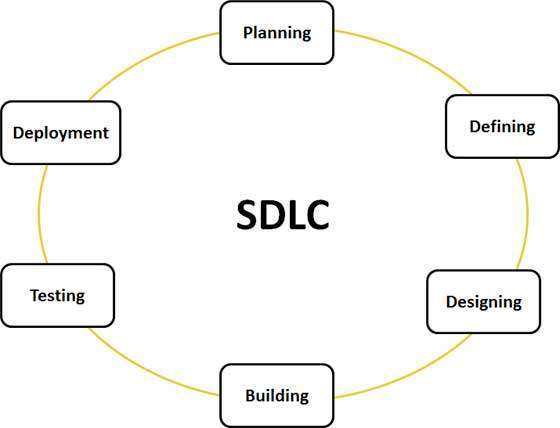Software Development Life Cycle is an industry technique, an international standard used to design, develop and test software to meet the user expectations. It also helps to reach goals within time and cost estimates.
 The SDLC consists of the following stages:
The SDLC consists of the following stages:
1. Planning
It is performed by the senior members with inputs from the customer, sales department, market surveys and domain expert. This information is then used to plan the basic project approach. Identification of the risks associated with the project. Define the technical approaches that can be followed to implement the project successfully with minimum risks.
2. Defining requirements
Define and document the product requirements and get them approved from the customer or the market analysts.
3. Designing the product architecture
Based on the requirements specified in SRS,usually more than one design approach for the product architecture is proposed and documented in a DDS (Design Document Specification).
The DDS is then reviewed by the stakeholders and the best approach is selected for the product.
4. Building the product
The development starts, the programming code is generated as per DDS. Developers has to follow the coding guidelines by their organization and programming tools.
5. Testing the product
Testing stage of the product where products defects are reported, tracked, fixed and retested, until reaches standards defined in the SRS.
6. Deployment
Once the product has been developed and tested it’s ready to be released to the market. The product may first be released in a limited segment and tested in a real business environment. Based on the feedback, the product may be released as it is or with suggested enhancements in the targeting market segment. After the product is released in the market, its maintenance is done for the existing customer base.
There are several SDLC models:
- Waterfall model
- Iterative

- Spiral model
- V-model
- Big Bang model

